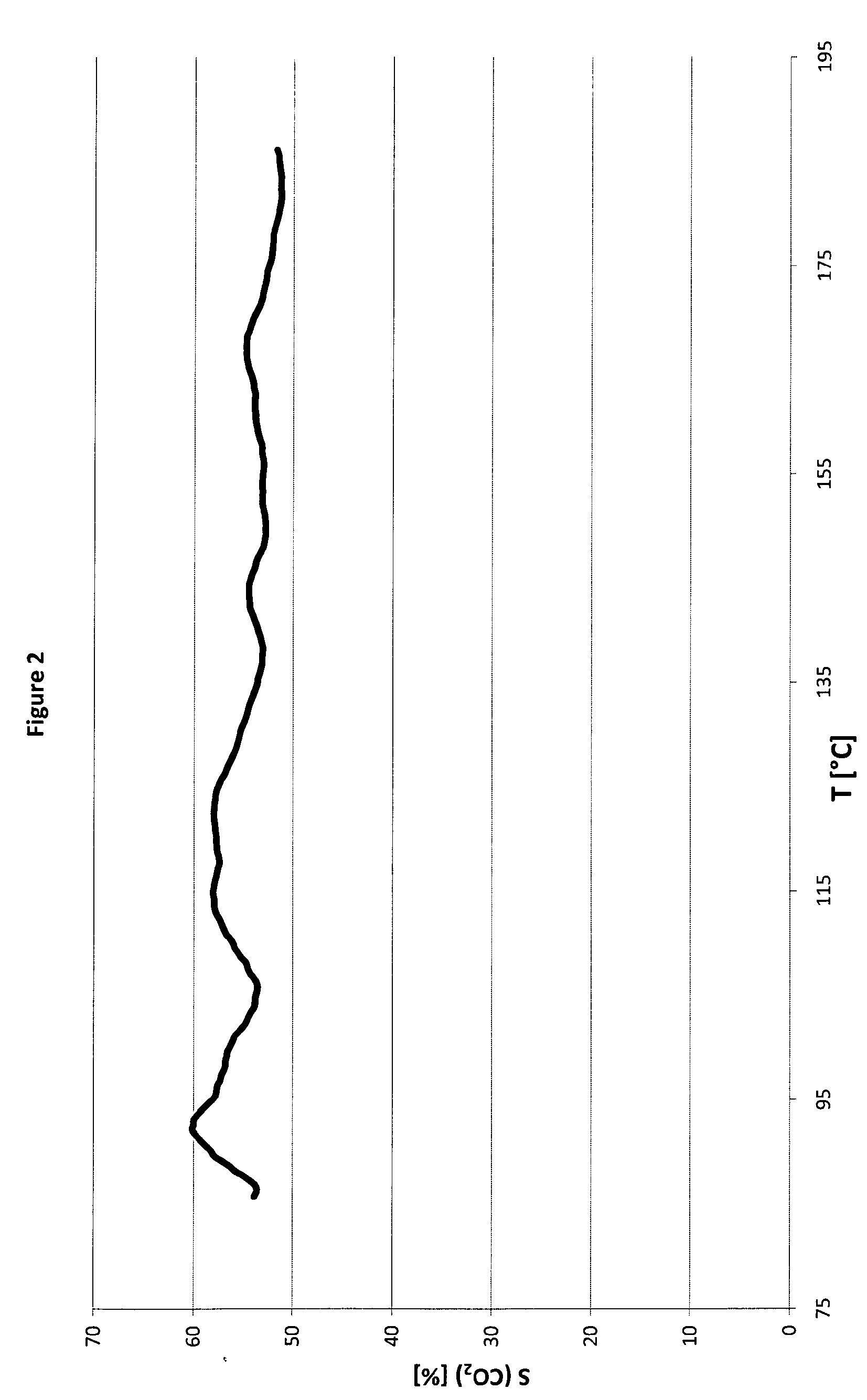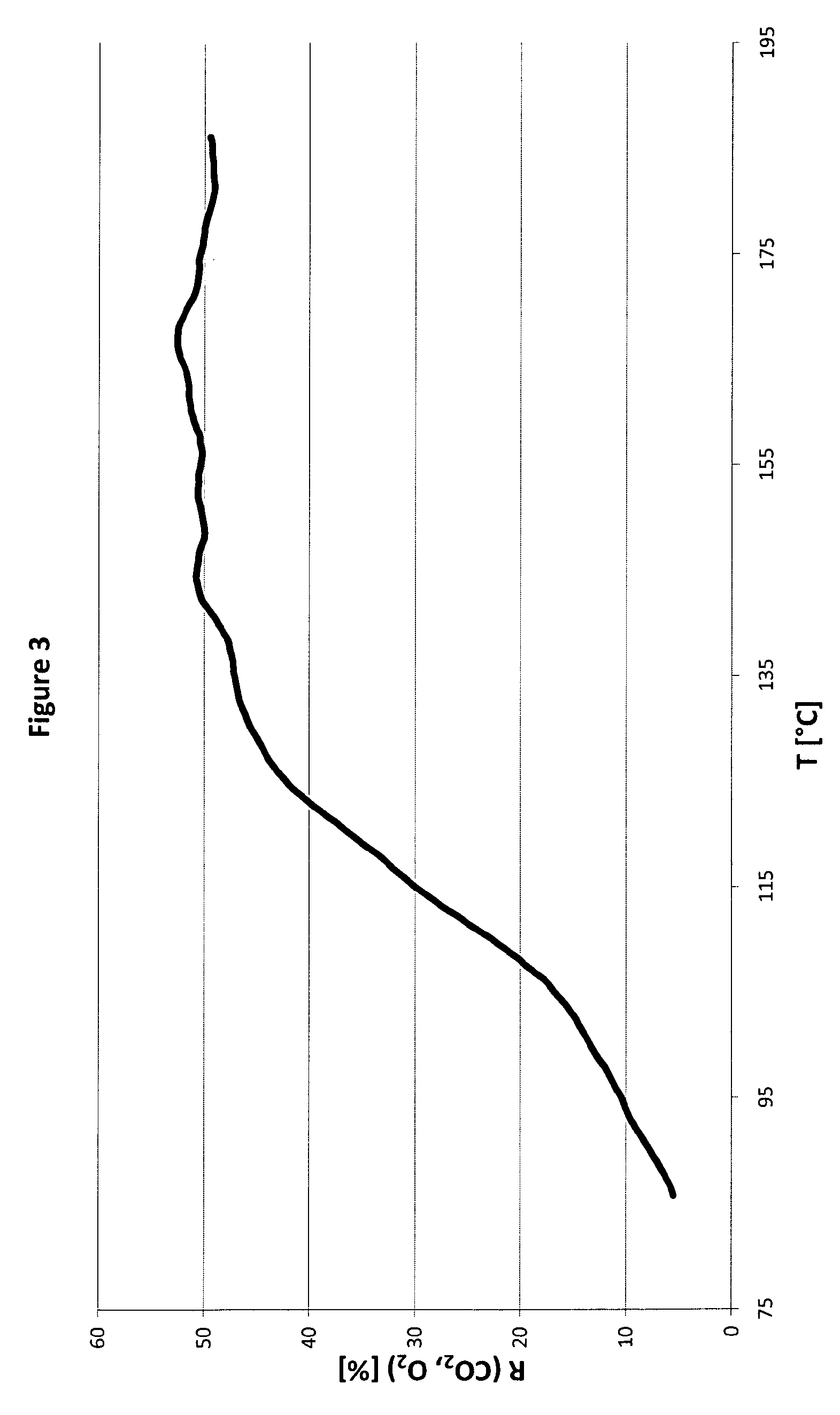Method for preparation of bimetallic compositions of cobalt and palladium on an inert material support and compositions obtainable by the same
a technology of inert material and bimetallic composition, which is applied in the direction of metal/metal-oxide/metal-hydroxide catalyst, inorganic chemistry, molecular sieve catalyst, etc., can solve the problems of reduced efficiency, high cost of precious metal, and relatively high working temperature, so as to reduce cost
- Summary
- Abstract
- Description
- Claims
- Application Information
AI Technical Summary
Benefits of technology
Problems solved by technology
Method used
Image
Examples
example 1
Preparation of Composition 1, Metallic Content 1.8% of the Total Weight
a) Reduction of the Size of the Al2O3 Particles
[0079]13 g of Al2O3 are suspended in a mixture of toluene (90 ml) and n-octane (10 ml) and treated with ultrasound for 24 ore. The treatment is, then, interrupted to allow the precipitation of Al2O3 in 4-5 hours, the supernatant is decanted and the residue dried at 80° C. under high vacuum for 18 hours and placed in an argon atmosphere. All the subsequent operations must be performed in an Ar atmosphere using the “Schlenk”-type techniques.
b) Synthesis of Co(0) Nanoparticles on Al2O3 Support (Co@Al2O3)
[0080]The Al2O3 obtained at step a), dried and under argon, is placed in a 250 ml three-necked flask equipped with a mechanical stirrer (not magnetic) and a reflux condenser. Co2(CO)8 (0.4 g) and toluene (150 ml) are added to the 13 g of Al2O3 and the mixture undergoes vigorous stirring for 2 hours. Al(C8H17)3 (0.12 ml) is, then, added to the reaction mixture at room t...
example 2
Preparation of Composition 2, Metallic Content 1.8% of the Total Weight
a) Reduction of the Al2O3 Particle Size
[0089]13 g of Al2O3 are suspended in a mixture of toluene (90 ml) and n-octane (10 ml) and treated with ultrasound for 24 hours. The treatment is, then, interrupted to allow the Al2O3 precipitation in 4-5 hours, the supernatant is decanted and the residue is dried at 80° C. high vacuum for 18 hours and placed in an argon atmosphere.
[0090]The subsequent operation must be performed in an Ar using the “Schlenk”-type techniques.
b) Synthesis of Co(0) Nanoparticles on an Al2O3 Support (Co@Al2O3)
[0091]The Al2O3 obtained at step a), dried and under argon, is placed in a 250 ml three-necked flask equipped with a mechanical stirrer (not magnetic) and a reflux condenser. Co2(CO)8 (0.4 g) and toluene (150 ml) are added to the Al2O3 and the mixture undergoes vigorous stirring for 2 hours. Al(C8H17)3 (0.12 ml) is, then, added to the reaction mixture at room temperature and the mixture ...
example 3
Preparation of Composition 3, Metallic Content 10% of the Total Weight
a) Reduction of the Size of the Al2O2Particles
[0099]6 g of Al2O3 are suspended in a mixture of toluene (90 ml) and n-octane (10 ml) and treated with ultrasound for 24 ore. The treatment is, then, interrupted to allow the Al2O3 precipitation in 4-5 hours, the supernatant is decanted and the residue dried at 80° C. under high vacuum for 18 hours and placed in an argon atmosphere (the subsequent operations must be performed in an Ar atmosphere, using the “Schlenk”-type techniques).
b) Synthesis of Co Nanoparticles on an Al3O3 Support (Co@Al2O3)
[0100]The Al2O3 obtained in phase a), dried and under argon, is placed in a 250 ml three-necked flask equipped with a mechanical stirrer (not magnetic) and a reflux condenser. Co2(CO)8 (1.0 g) and toluene (100 ml) are added to the Al2O3 and the mixture undergoes vigorous stirring for 2 hours. Al(C8H17)3 (0.30 ml) is, then, added to the reaction mixture at room temperature and ...
PUM
| Property | Measurement | Unit |
|---|---|---|
| Temperature | aaaaa | aaaaa |
| Temperature | aaaaa | aaaaa |
| Temperature | aaaaa | aaaaa |
Abstract
Description
Claims
Application Information
 Login to View More
Login to View More - R&D
- Intellectual Property
- Life Sciences
- Materials
- Tech Scout
- Unparalleled Data Quality
- Higher Quality Content
- 60% Fewer Hallucinations
Browse by: Latest US Patents, China's latest patents, Technical Efficacy Thesaurus, Application Domain, Technology Topic, Popular Technical Reports.
© 2025 PatSnap. All rights reserved.Legal|Privacy policy|Modern Slavery Act Transparency Statement|Sitemap|About US| Contact US: help@patsnap.com



